|
|
Post by sagebrush on Feb 11, 2024 15:51:43 GMT
Bette Davis recommended John Barrymore for the role of Sheridan Whiteside in The Man Who Came to Dinner. Barrymore's alcoholism and inability to remember his lines caused him to be passed over. Monty Woolley, who played Sheridan Whiteside on Broadway, was cast instead.
Paramount deactivated the project and ended up selling the story to Republic. Republic made it with Joseph Schildkraut and Ona Munson, who do a fine job. But every time I watch the final scene with Schildkraut and Munson celebrating Christmas, I think of Barrymore and Lombard and imagine them in the roles.I am a true Joseph Schildkraut fan, so perhaps I am biased, but I feel like Barrymore might have (at that point in his career) over-played the role of Mr. M. |
|
|
|
Post by topbilled on Feb 11, 2024 16:02:08 GMT
Another almost-casting which I alluded to yesterday was THE CHEATERS (1945). It was originally a property owned by Paramount. In 1941, Paramount announced it was going to make the story with Carole Lombard & John Barrymore. She and Barrymore had previously teamed up for TWENTIETH CENTURY and TRUE CONFESSION. It was slated for production in 1942, but then she was killed in a plane crash in January. Barrymore died in May.
Paramount deactivated the project and ended up selling the story to Republic. Republic made it with Joseph Schildkraut and Ona Munson, who do a fine job. But every time I watch the final scene with Schildkraut and Munson celebrating Christmas, I think of Barrymore and Lombard and imagine them in the roles. I am a true Joseph Schildkraut fan, so perhaps I am biased, but I feel like Barrymore might have (at that point in his career) over-played the role of Mr. M.
It's difficult to compare Munson to Lombard. My guess is that if Lombard had done it, since she was under contract to Paramount, she would have gotten the star treatment...and that role would have been expanded and she would have overshadowed the family (played by Eugene Pallette, Billie Burke and Ruth Terry). The Republic version keeps the Munson/Lombard character significant to the plot, but does not have her overshadow the others. It feels like more of an ensemble picture. |
|
|
|
Post by gerald424 on Feb 12, 2024 4:43:15 GMT
2.11 DOLORES DEL RIO 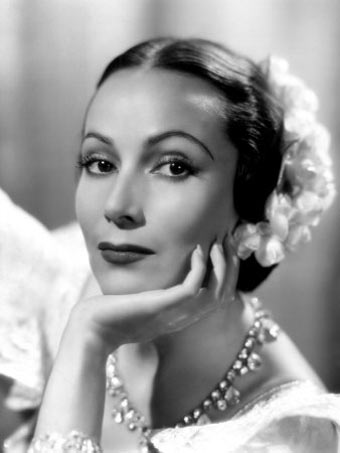
I'm a big fan of hers. She's one of my favorites from her era. They say some of her best work happened when she returned to Mexico to make the films she wanted to make. I've had to seek out subtitled versions of those films. She was really special.
|
|
|
|
Post by topbilled on Feb 12, 2024 14:25:26 GMT
2.11 DOLORES DEL RIO 
I'm a big fan of hers. She's one of my favorites from her era. They say some of her best work happened when she returned to Mexico to make the films she wanted to make. I've had to seek out subtitled versions of those films. She was really special.
|
|
|
|
Post by topbilled on Feb 12, 2024 14:53:13 GMT
Guy Madison was discovered by one of David Selznick's employees when he was on a short leave from the military during WWII. He was introduced to Selznick, quickly signed to a contract and given a small role in SINCE YOU WENT AWAY. His boyish good looks made him immediately popular with moviegoers.
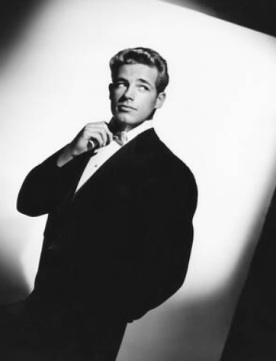
Madison returned to the military for the remainder of his enlistment. But after the war, he came back to Hollywood where Selznick promptly loaned him out to RKO for the hit film TILL THE END OF TIME with Dorothy McGuire (another Selznick contractee) as his leading lady. This film did very well with audiences, though it was compared to Goldwyn's THE BEST YEARS OF OUR LIVES.
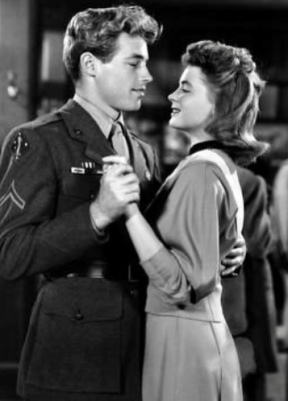
After this he was cast in RKO's romcom HONEYMOON with Shirley Temple, but the film lost money.
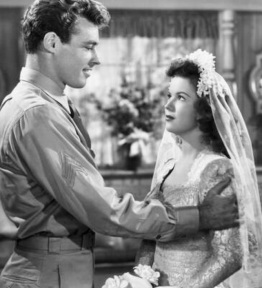
There was a loan out to Allied Artists for MASSACRE RIVER, which became the first of many westerns he made. In this picture, he was paired with Rory Calhoun with whom he was linked romantically (though that was always publicly denied). He and Calhoun had the same agent, Henry Wilson, who was definitely out of the closet and had represented and renamed many pretty boys that wound up on screen.
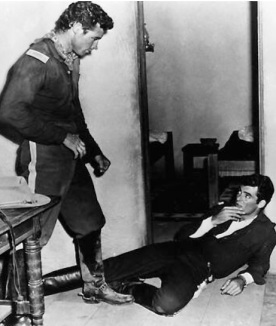
Madison and Calhoun both married starlets and had kids, but they remained close during the 1950s. In Madison's subsequent picture, a Civil War drama called DRUMS OF THE DEEP SOUTH, he teamed up with Barton MacLane and Barbara Payton. This is a very underrated picture with direction by William Cameron Menzies, who had been art director on Selznick's GONE WITH THE WIND...

DRUMS IN THE DEEP SOUTH was the last film Guy Madison made at RKO. Selznick sold his contract to Columbia where he'd star in a bunch of modestly budgeted programmers, typically westerns and war films. Next up was RED SNOW with Mala, an anti-communist cold war picture:
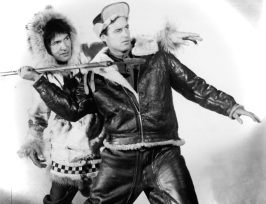
He was loaned to Warners for a 3D western opposite Vera Miles-- THE CHARGE AT FEATHER RIVER. This film became one of the more commercially successful films of his career.

He stayed at Warners for another big budget western, THE COMMAND, which was also a hit with audiences. His leading lady this time was Joan Weldon:
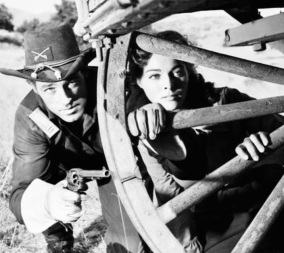
Part of his success in the western genre was due to the fact he was starring in a radio program called The Adventures of Wild Bill Hickok. It transferred to television and ran for seven seasons. Andy Devine played his sidekick:
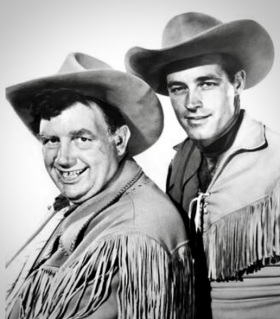
While continuing the weekly series with Devine, he was still able to appear in motion pictures, one of the first actors to successfully go back and forth between the small screen and big screen. Though he was arguably typecast as western heroes or soldiers:
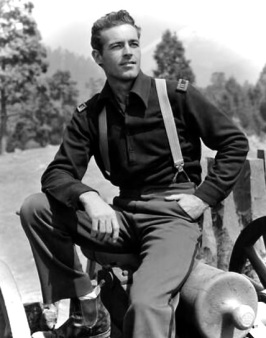
One breakout role came in Columbia's noir caper 5 AGAINST THE HOUSE which paired him with Kim Novak:
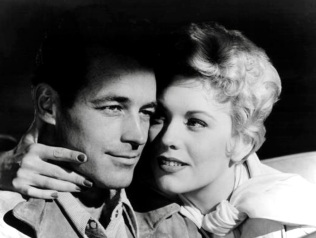
It was then back to westerns, costarring with Victor Mature in THE LAST FRONTIER:
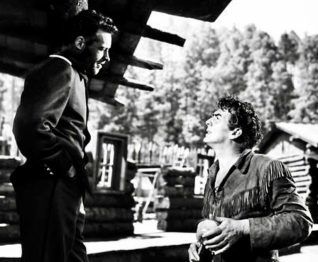
There were a few more westerns at Columbia including THE HARD MAN and REPRISAL, a gritty story in which he played a half-breed. He moved over to 20th Century Fox where he made an air force drama-- ON THE THRESHOLD OF SPACE-- before he was cast against type in a romance drama with Jean Simmons called HILDA CRANE:
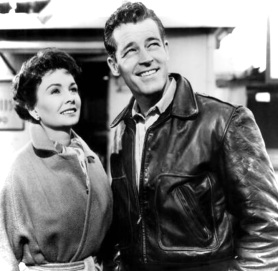
In 1958 his hit TV series had concluded its run. Some episodes were combined and edited into feature-length westerns released thru Allied Artists. By 1960, though, roles in Hollywood were not as plentiful for Madison. So he moved abroad and reinvented himself in a series of spaghetti westerns and combat films in Italy and Germany. This phase of his film career lasted until around 1970 after which point he semi-retired from acting. There were occasional guest starring roles on television in the late 70s and 80s, but he was content to spend time taking it easy at his ranch near Palm Springs.
|
|
|
|
Post by NoShear on Feb 13, 2024 14:56:13 GMT
A Baker's Dozen of Norma Shearer Films
He Who gets Slapped (1924)
Lady of the Night (1925)
If Norma Shearer had not appeared in another movie following the above mentioned, she'd arguably poked a couple of holes in the future Pauline Kael school of slander regarding the glamorous actress. Though she was not yet on the arm of Irving Thalberg, M-G-M banked their first film proper for the Christmas crowd partly on the young gal who shares screentime with the likes of both Lon Chaney and John Gilbert.
Not too long thereafter Norma Shearer showed depth of acting ability in her bad/good dual role.
The Devil's Circus (1926)
A LADY OF CHANCE (1928) - Norma Shearer's last - but fortunately not lost - silent movie.
THE TRIAL OF MARY DUGAN (1929) - Norma Shearer's first talkie.
THE HOLLYWOOD REVUE (1929) - Norma Shearer's 'audition' for...
ROMEO AND JULIET (1936) - Dreamy yield set to William Shakespeare's words: I'm swooning.
THEIR OWN DESIRE (1929)
The "DIVORCEE" (1930) - Norma Shearer's "Best Actress" role was recently received with glowing reviews as well as an honorary mention for her hair's supporting role by the Sunday Live crew.
A Free Soul (1931) - A nod to my film friend, Peebs.
MARIE ANTOINETTE (1938) - Just on the ever-so-slim chance I get some Ben Mankiewicz/Eddie Muller WB lot fantasy-come-true where I encounter The First Lady of MGM on her home turf, I want to be able to answer, yes, Ms. Shearer, I included your favorite film.
THE WOMEN (1939) - Norma Shearer holds her own amongst M-G-M's stable of starlets.
ESCAPE (1940) - Even never-Norma Shearers seem to like this one. I should know; I was once one of 'em.
|
|
|
|
Post by topbilled on Feb 13, 2024 15:22:42 GMT
A Baker's Dozen of Norma Shearer Films He Who gets Slapped (1924) Lady of the Night (1925)
If Norma Shearer had not appeared in another movie following the above mentioned, she'd arguably poked a couple of holes in the future Pauline Kael school of slander regarding the glamorous actress. Though she was not yet on the arm of Irving Thalberg, M-G-M banked their first film proper for the Christmas crowd partly on the young gal who shares screentime with the likes of both Lon Chaney and John Gilbert. Not too long thereafter Norma Shearer showed depth of acting ability in her bad/good dual role. The Devil's Circus (1926)
A LADY OF CHANCE (1928) - Norma Shearer's last - but fortunately not lost - silent movie. THE TRIAL OF MARY DUGAN (1929) - Norma Shearer's first talkie.
THE HOLLYWOOD REVUE (1929) - Norma Shearer's 'audition' for... ROMEO AND JULIET (1936) - Dreamy yield set to William Shakespeare's words: I'm swooning. THEIR OWN DESIRE (1929) The "DIVORCEE" (1930) - Norma Shearer's "Best Actress" role was recently received with glowing reviews as well as an honorary mention for her hair's supporting role by the Sunday Live crew.
A Free Soul (1931) - A nod to my film friend, Peebs. MARIE ANTOINETTE (1938) - Just on the ever-so-slim chance I get some Ben Mankiewicz/Eddie Muller WB lot fantasy-come-true where I encounter The First Lady of MGM on her home turf, I want to be able to answer, yes, Ms. Shearer, I included your favorite film.
THE WOMEN (1939) - Norma Shearer holds her own amongst M-G-M's stable of starlets. ESCAPE (1940) - Even never-Norma Shearers seem to like this one. I should know; I was once one of 'em. |
|
|
|
Post by topbilled on Feb 13, 2024 15:38:13 GMT
Day 13. Norma Shearer. If you look at Norma Shearer’s filmography you’ll see that she made 40 feature films at MGM. The first one was for Metro (before Metro merged with Goldwyn & Mayer). One thing that I found interesting was that her output at the studio was divided exactly in half— the first 20 films were silents and the next 20 were sound films.
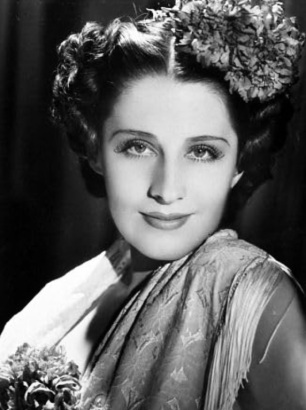
The 20 silent films were made between 1923 and 1929, which means she was averaging 3-4 pictures annually. But after she wed producer Irving Thalberg in 1927, her output slowed a bit. Granted, she was making prestige projects for Thalberg. But her 20 sound films occurred over a 13 year period from 1929 until her retirement in 1942.
I should point out that Norma’s first uncredited roles began back in 1919 at the age of 17. When she retired from the screen in 1942, she was just 40 years old. She had been offered MRS. MINIVER which she turned down, and she was also to be loaned to Warner Brothers for THE GAY SISTERS, which went to Barbara Stanwyck, since she turned it down too.
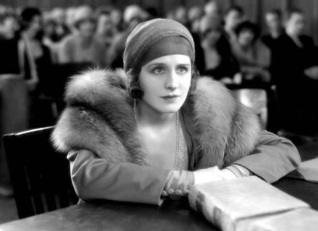
For purposes of this post, I will concentrate on the highlights of her sound films. The first one was the original version of THE TRIAL OF MARY DUGAN with Lewis Stone playing her lawyer. This story was remade in 1941 with Laraine Day. Both versions are tangled up today in legal issues and cannot be broadcast on cable or seen via home video. Such a shame.
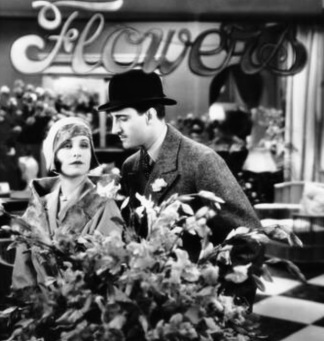
THE LAST OF MRS. CHEYNEY was a substantial hit in 1929, with Basil Rathbone as the suave leading man. This story would be remade in 1937 with Joan Crawford & Robert Montgomery and in 1951 with Greer Garson & Michael Wilding, that time as THE LAW AND THE LADY. Each version was a hit with audiences.

THE DIVORCEE was her fifth sound film, and 25th film at MGM. It was a critical and commercial high point of her career at the studio. She earned the Oscar as best actress in a part that was intended for Joan Crawford, until Norma convinced Irving she was sexy enough to play the role. Though Norma would not win any more Oscars, she would be nominated a few more times.
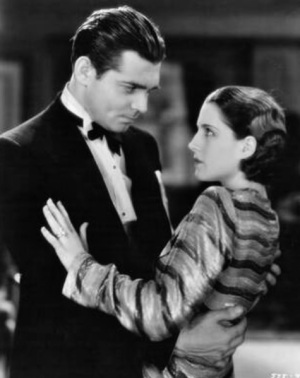
A FREE SOUL, the following year, brought the next nomination. She didn’t win, but costar Lionel Barrymore did. This was the film that catapulted Clark Gable from supporting roles to lead roles. MGM remade the story in 1953 with Elizabeth Taylor taking Norma’s role as THE GIRL WHO HAD EVERYTHING.
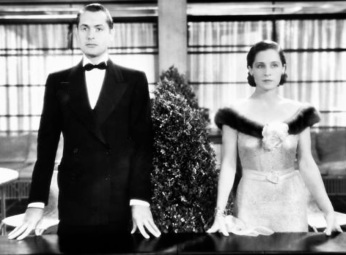
PRIVATE LIVES (1931) was based on a Noel Coward play, and it teamed her with Robert Montgomery, her costar from THE DIVORCEE. She made five features with Montgomery.
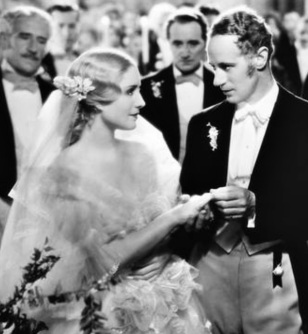
The original version of SMILIN’ THROUGH (1932) found her appearing opposite Leslie Howard, who’d had a supporting role in A FREE SOUL. The studio remade SMILIN’ THROUGH with Jeanette MacDonald in 1941. The later version was in Technicolor.
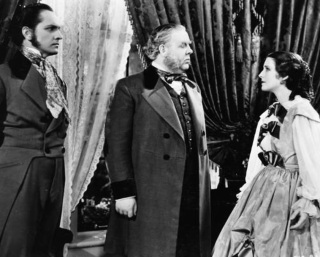
In 1934 Norma had the lead role in the first version of THE BARRETTS OF WIMPOLE STREET. Fredric March was her love interest, and Charles Laughton played the controlling father. A Technicolor update by the same director was filmed in 1957 with Jennifer Jones, Bill Travers & John Gielgud. Both of these are splendid productions, but Norma’s performance as a reclusive poet is a tad more poignant. She earned another Oscar nomination.
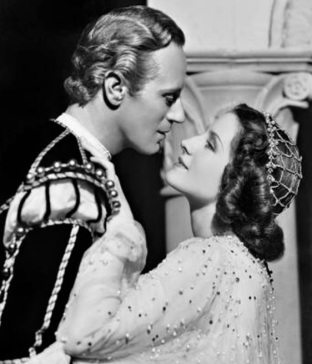
In 1936 she returned after a two-year absence in MGM’s lavish version of ROMEO AND JULIET. Again, she was reunited with Leslie Howard on screen. Both leads were certainly a bit long in the tooth to play Shakespeare’s famous star-crossed teenaged lovers. But audiences didn’t seem to mind, and neither did the Academy, since Norma received another nomination for this role.
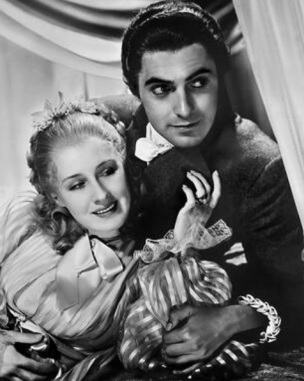
Irving died in 1936, while planning Norma’s latest prestige project— MARIE ANTOINETTE. This would become her most favorite role; it netted Norma her fifth and final Oscar nomination. The two and a half hour historical epic barely broke even at the box office, since it was one of MGM’s most expensively produced pictures at the time. Her leading man was young Tyrone Power, on a rare loan out from Fox.

Her next big hit was in George Cukor’s THE WOMEN (1939) with gal pals Paulette Goddard and Mary Boland. Her on-screen nemesis was played by Joan Crawford, and this picture did boffo business at the box office.
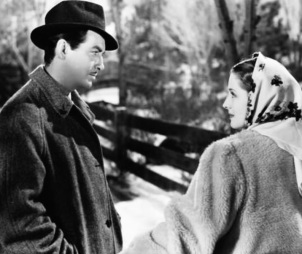
One of her final hits had Norma opposite Robert Taylor in the wartime thriller ESCAPE (1940). Taylor’s mother was played by Alla Nazimova.
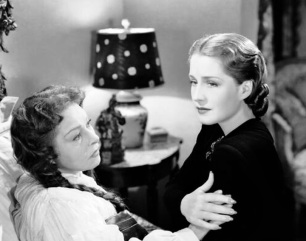
By 1942 Norma’d had enough of stardom. She still remained connected to MGM due to her late husband’s shares in the company. Plus her brother Douglas Shearer was still the main sound engineer at the studio. But she was now content to live the rest of her life off-screen.
|
|
|
|
Post by NoShear on Feb 13, 2024 16:03:33 GMT
Day 13. Norma Shearer. If you look at Norma Shearer’s filmography you’ll see that she made 40 feature films at MGM. The first one was for Metro (before Metro merged with Goldwyn & Mayer). One thing that I found interesting was that her output at the studio was divided exactly in half— the first 20 films were silents and the next 20 were sound films.

The 20 silent films were made between 1923 and 1929, which means she was averaging 3-4 pictures annually. But after she wed producer Irving Thalberg in 1927, her output slowed a bit. Granted, she was making prestige projects for Thalberg. But her 20 sound films occurred over a 13 year period from 1929 until her retirement in 1942.
I should point out that Norma’s first uncredited roles began back in 1919 at the age of 17. When she retired from the screen in 1942, she was just 40 years old. She had been offered MRS. MINIVER which she turned down, and she was also to be loaned to Warner Brothers for THE GAY SISTERS, which went to Barbara Stanwyck, since she turned it down too.

For purposes of this post, I will concentrate on the highlights of her sound films. The first one was the original version of THE TRIAL OF MARY DUGAN with Lewis Stone playing her lawyer. This story was remade in 1941 with Laraine Day. Both versions are tangled up today in legal issues and cannot be broadcast on cable or seen via home video. Such a shame.

THE LAST OF MRS. CHEYNEY was a substantial hit in 1929, with Basil Rathbone as the suave leading man. This story would be remade in 1937 with Joan Crawford & Robert Montgomery and in 1951 with Greer Garson & Michael Wilding, that time as THE LAW AND THE LADY. Each version was a hit with audiences.

THE DIVORCEE was her fifth sound film, and 25th film at MGM. It was a critical and commercial high point of her career at the studio. She earned the Oscar as best actress in a part that was intended for Joan Crawford, until Norma convinced Irving she was sexy enough to play the role. Though Norma would not win any more Oscars, she would be nominated a few more times.

A FREE SOUL, the following year, brought the next nomination. She didn’t win, but costar Lionel Barrymore did. This was the film that catapulted Clark Gable from supporting roles to lead roles. MGM remade the story in 1953 with Elizabeth Taylor taking Norma’s role as THE GIRL WHO HAD EVERYTHING.

PRIVATE LIVES (1931) was based on a Noel Coward play, and it teamed her with Robert Montgomery, her costar from THE DIVORCEE. She made five features with Montgomery.

The original version of SMILIN’ THROUGH (1932) found her appearing opposite Leslie Howard, who’d had a supporting role in A FREE SOUL. The studio remade SMILIN’ THROUGH with Jeanette MacDonald in 1941. The later version was in Technicolor.

In 1934 Norma had the lead role in the first version of THE BARRETTS OF WIMPOLE STREET. Fredric March was her love interest, and Charles Laughton played the controlling father. A Technicolor update by the same director was filmed in 1957 with Jennifer Jones, Bill Travers & John Gielgud. Both of these are splendid productions, but Norma’s performance as a reclusive poet is a tad more poignant. She earned another Oscar nomination.

In 1936 she returned after a two-year absence in MGM’s lavish version of ROMEO AND JULIET. Again, she was reunited with Leslie Howard on screen. Both leads were certainly a bit long in the tooth to play Shakespeare’s famous star-crossed teenaged lovers. But audiences didn’t seem to mind, and neither did the Academy, since Norma received another nomination for this role.

Irving died in 1936, while planning Norma’s latest prestige project— MARIE ANTOINETTE. This would become her most favorite role; it netted Norma her fifth and final Oscar nomination. The two and a half hour historical epic barely broke even at the box office, since it was one of MGM’s most expensively produced pictures at the time. Her leading man was young Tyrone Power, on a rare loan out from Fox.

Her next big hit was in George Cukor’s THE WOMEN (1939) with gal pals Paulette Goddard and Mary Boland. Her on-screen nemesis was played by Joan Crawford, and this picture did boffo business at the box office.

One of her final hits had Norma opposite Robert Taylor in the wartime thriller ESCAPE (1940). Taylor’s mother was played by Alla Nazimova.

By 1942 Norma’d had enough of stardom. She still remained connected to MGM due to her late husband’s shares in the company. Plus her brother Douglas Shearer was still the main sound engineer at the studio. But she was now content to live the rest of her life off-screen. Thank you, TopBilled, for giving her a day. |
|
|
|
Post by christine on Feb 13, 2024 16:04:12 GMT
The things I like about Norma is that she was one of those jewels that transitioned from silent to talking pictures. I also like the fact that Janet Leigh (one of my favorites), was her protégé.
I've seen most of the movies you mentioned - but Marie Antoinette I can't watch again because it's sooo sad.
She is one that really embodies the Golden Age of Hollywood!
|
|
|
|
Post by topbilled on Feb 14, 2024 14:11:19 GMT
Day 14. Paul Lukas.
Despite his having earned an Oscar and a Golden Globe for his film re-creation of the Broadway role he originated in WATCH ON THE RHINE, Paul Lukas is often given short shrift today. Why? He’s such an accomplished player in all his films it’s easy to forget he’s acting.
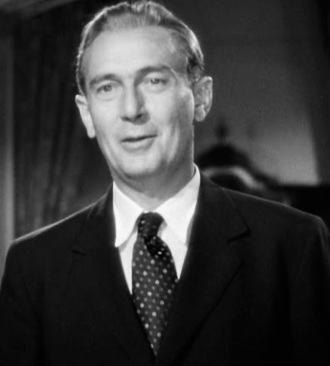
Lukas started acting in his native Austria. By 1920, three years after beginning his silent film career, he had lead roles in Austrian films. There were also roles in German films in the early to mid-1920s. By 1928, he had found his way to Hollywood and signed a contract with Paramount. Paramount kept him plenty busy for the next few years.
Between 1928 and 1932, he made nearly 30 precodes at Paramount. The first year, 1928, they paired him with Pola Negri three times. One of these pictures was THE WOMAN FROM MOSCOW.
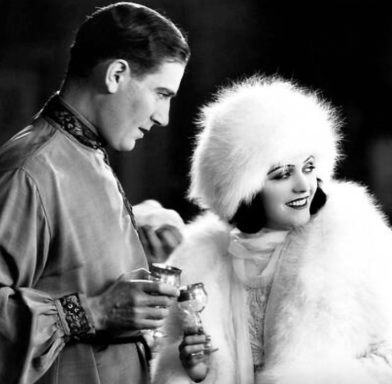
He was also put in films with some of Paramount’s other leading ladies, like Sylvia Sidney, Carole Lombard and Tallulah Bankhead. Oh, and Ruth Chatterton. He made four precodes with her at Paramount such as THE RIGHT TO LOVE. They would later collaborate in DODSWORTH.
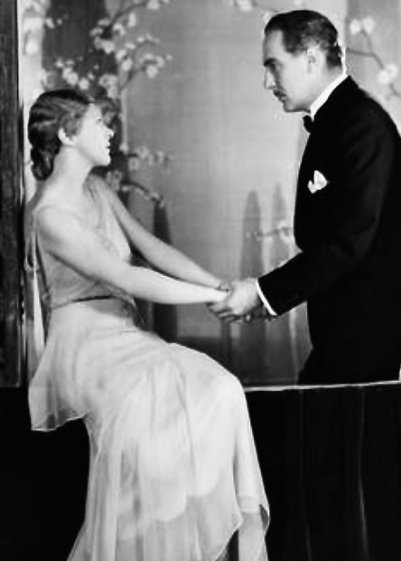
Typically the studio cast Lukas as a second lead, playing suave men about town. He had his first lead role at Paramount in WOMEN LOVE ONCE with Eleanor Boardman.
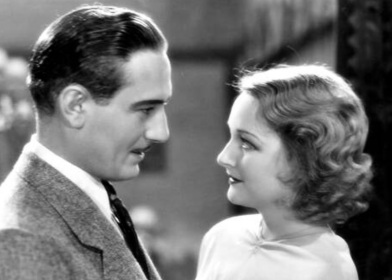
After his contract with Paramount ended in 1932, he began to freelance, and it was not difficult for him to continue finding screen roles. One notable freelance assignment was his first one at MGM, DOWNSTAIRS (1932) in which he supported John Gilbert.
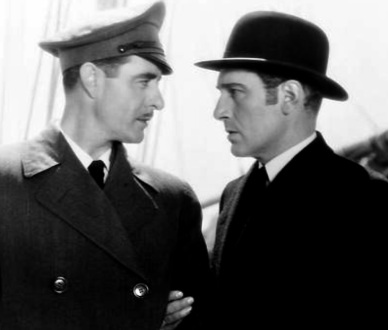
At RKO he supported Constance Bennett in ROCKABYE (1932).
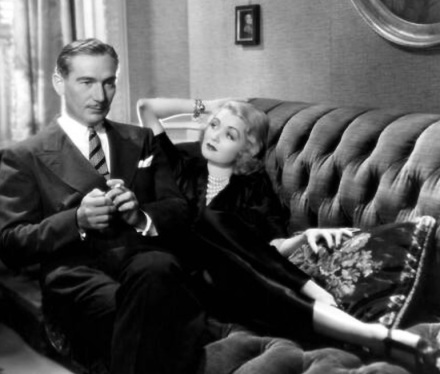
He then made GRAND SLAM (1933) with Loretta Young at Warners.
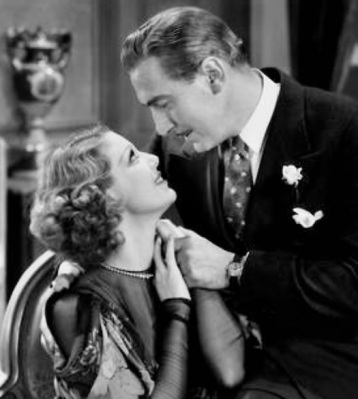
Back at RKO, he has one of his best film roles— portraying Professor Bhaer opposite Katharine Hepburn in David Selznick’s version of LITTLE WOMEN (1933). For many, his interpretation of the character is the definitive one.
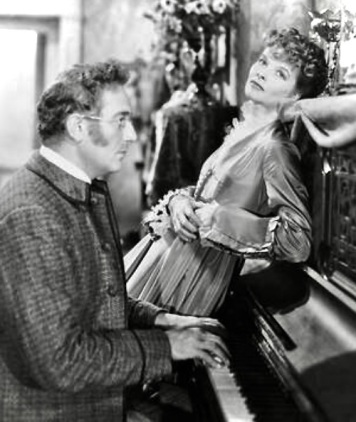
Another good assignment at RKO occurred with his third-billed part in THE FOUNTAIN with Ann Harding and Brian Aherne.
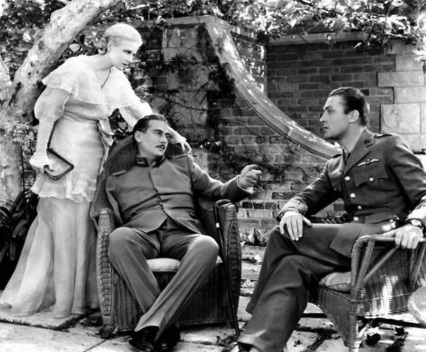
Until 1937, he continued to work steadily in Hollywood…then he went to England to do a film for Hitchcock, THE LADY VANISHES. He was cast with Michael Redgrave and Margaret Lockwood.

Lukas remained in Britain until 1939, then he returned to the U.S. He next appeared alongside Edward G. Robinson in CONFESSIONS OF A NAZI SPY for Warners.
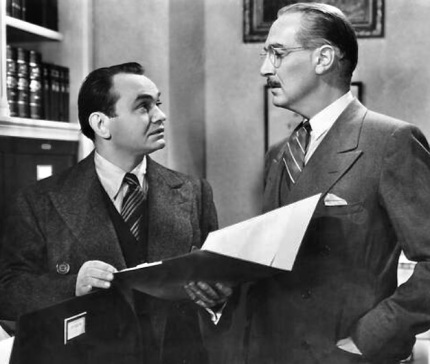
Of course, we can't forget the fun he had in THE GHOST BREAKERS with Paulette Goddard and Bob Hope. This was a chance to return to his old stomping grounds at Paramount.
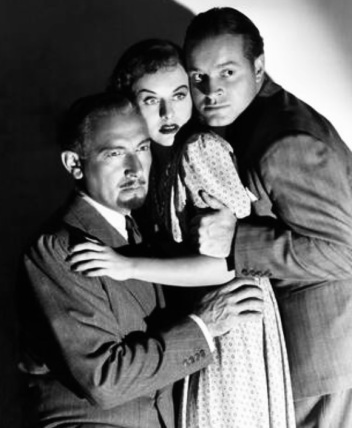
There was another Paramount flick in 1941, then he spent 1942 on Broadway doing Watch on the Rhine.
When Warner Brothers bought the rights, he went back to Hollywood and starred alongside Bette Davis in the film version. This would be his crowning achievement.
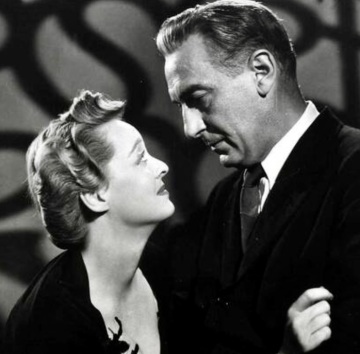
There was another Warner Brothers war film, UNCERTAIN GLORY, with Errol Flynn. Despite playing a heroic virtuous anti-fascist in Rhine, he somehow started becoming typecast as villains.
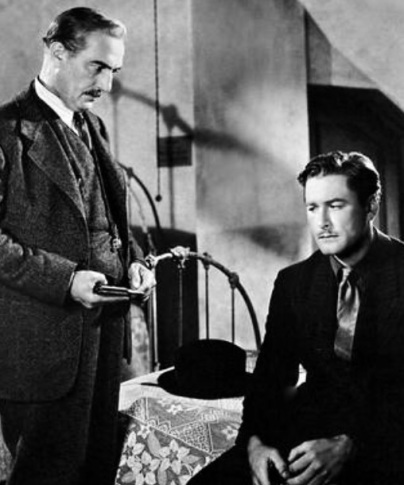
He was Hedy Lamarr’s controlling husband in EXPERIMENT PERILOUS (1944).
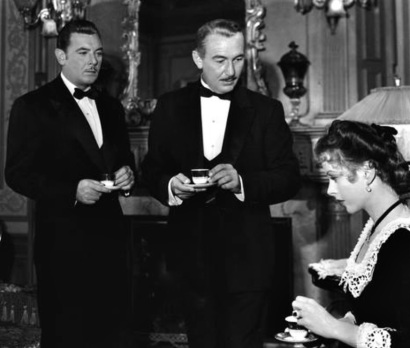
He was a killer in DEADLINE AT DAWN (1946)...something Susan Hayward didn't find out until the end of the movie.

A subsequent role had him acting opposite Merle Oberon in RKO's BERLIN EXPRESS (1948).
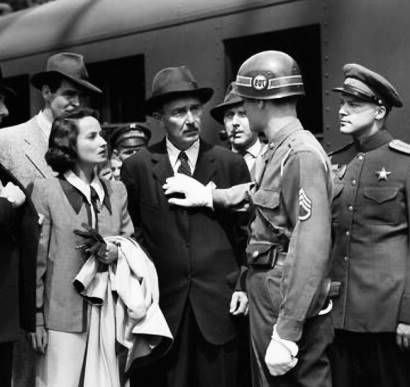
Then there was his part as a distinguished looking character in MGM's action adventure tale KIM (1950) with Dean Stockwell.
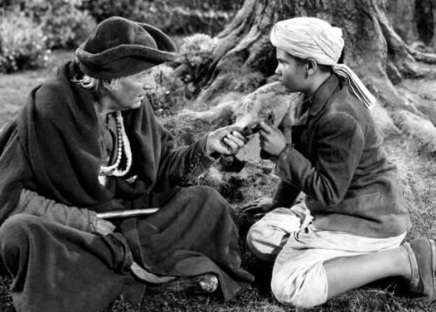
Film output slowed in the 1950s, but he continued to appear in “A” films until 1968. There was a level of competence and excellence that Paul Lukas brought to every role.
|
|
|
|
Post by sagebrush on Feb 14, 2024 15:44:00 GMT
I love Paul Lukas! Other than the song he sang in LITTLE WOMEN, Lukas didn't get much of a chance to display his very nice singing voice. Here is recording of a song he sang in the 1950 Broadway production of CALL ME MADAM:
|
|
|
|
Post by christine on Feb 14, 2024 20:37:27 GMT
I've enjoyed most of Paul Lukas' films you introduced today!
For me though, 1953 SCARED STIFF with Dean Martin, Jerry Lewis, Lizbeth Scott and Carmen Miranda, the remake of THE GHOST BREAKERS, was better! It was more entertaining and Dean and Jerry's characters grabbed the audience more! You get to hear Dean's wonderful voice and he even has some fun with Dorothy Malone. 😊
|
|
|
|
Post by topbilled on Feb 15, 2024 14:52:13 GMT
Day 15. Jane Wyatt was from a well-to-do east coast family (they were politically connected to the Roosevelts). However, she was removed from the upper crust social register, when it became public knowledge she was pursuing a career as an actress. That was a no-no in those circles. She didn’t get back on the social register until she married a prominent stock broker, whom she met one weekend at Franklin Roosevelt’s home. The marriage would last for 65 years.

Fortunately for us, Jane Wyatt didn’t do what the other high society debs did after marriage. She didn’t focus on serving tea and watercress sandwiches to her husband’s business acquaintances…instead, she continued to work as an actress.
Success on the stage led to a contract with Universal in 1934. Her first film had her in a supporting role with Reginald Denny in ONE MORE RIVER.
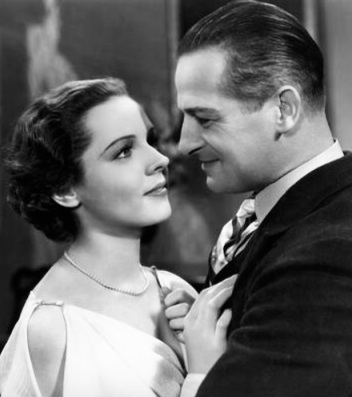
The bosses at Universal thought she had potential, so she was given a starring role opposite Philips Holmes in her next assignment— a big budget adaptation of GREAT EXPECTATIONS. She was still in her ingenue phase.

After GREAT EXPECTATIONS underperformed, she was loaned to RKO where she had a very good role in WE’RE ONLY HUMAN (a precode sounding title after the production code took affect). Her leading man was Preston Foster.
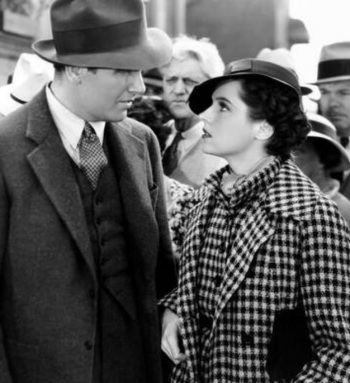
She went back to Universal for another assignment, but then was dropped by the studio. She quickly rebounded with a good part in Columbia’s LOST HORIZON, which became her most acclaimed film alongside Ronald Colman. Years later she said that when this picture was re-released to theaters in the 1940s, all the pacifist scenes were cut because the U.S. was at war.
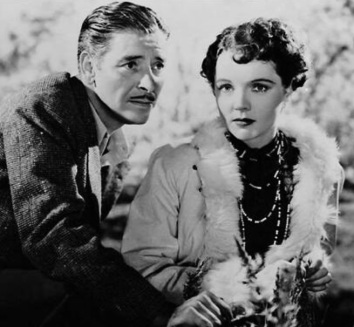
There was a three-year absence from motion pictures after LOST HORIZON, presumably so she could focus on marriage and having children. But she was back in 1940 with a two-picture deal at Republic and a two-picture deal at Warners. Warners put her in a screwball comedy with Dennis Morgan called KISSES FOR BREAKFAST, which was the only time she had done an outright farce. She’s very funny in this one.
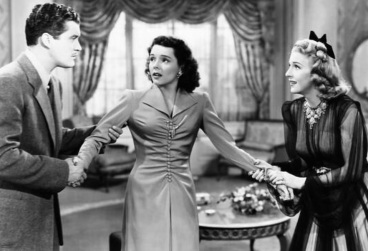
Next up, she signed with RKO where she made two war flicks. In ARMY SURGEON, she is cast as the title character. The film contains some of Jane Wyatt’s best acting; there is a scene where she has a breakdown trying to help patients while dealing with the horrors of war.
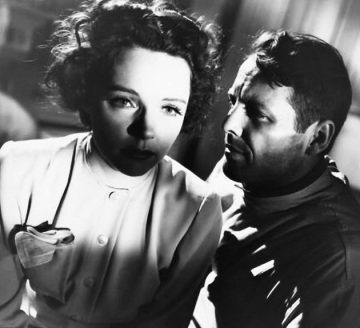
On the strength of this performance, RKO asked her to support Cary Grant in NONE BUT THE LONELY HEART.
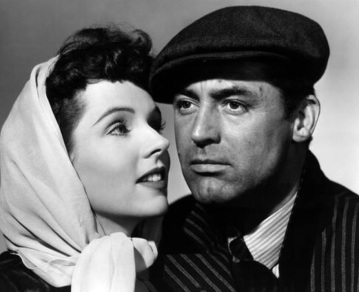
There were a few modestly budgeted independent westerns with Richard Dix, released thru United Artists.
After the war she signed with Fox, where she was back in “A” pictures. She had a role in GENTLEMAN’S AGREEMENT, and in BOOMERANG. Both pictures were directed by Elia Kazan.
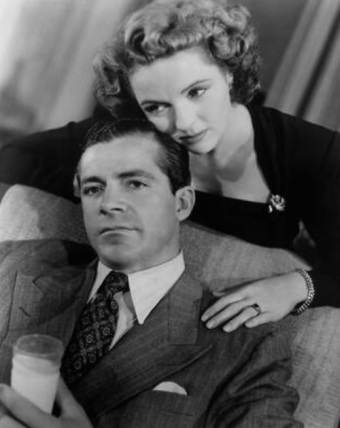
She enjoyed working with Dana Andrews so much in BOOMERANG that she teamed up with him again in NO MINOR VICES.
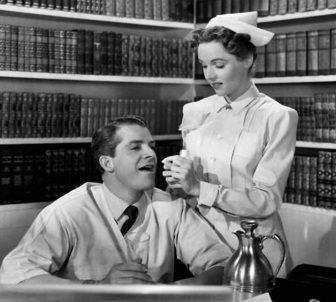
Then she played a good wife, now supporting Dick Powell, in the classic noir PITFALL.

This was followed by a return to Fox, where she did another western— this time with Randolph Scott. She was the good woman who kept him from Nancy Olson’s clutches.

Also at Fox, she had an interesting role against type as a manipulative wife who needed Lee J. Cobb’s help to get rid of her dead husband’s body in THE MAN WHO CHEATED HIMSELF. Shades of DOUBLE INDEMNITY to be sure!
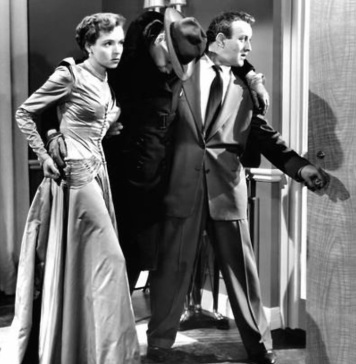
She went back to being a good wife again. She and husband Lloyd Nolan tried to help young Audie Murphy go straight, but he was having too much fun as a BAD BOY.

Samuel Goldwyn would cast her a year later in OUR VERY OWN. In this film, she is a decent adoptive mother who has a conversation with a selfish biological mother played by Ann Dvorak. Roles like this influenced the rest of her screen career.
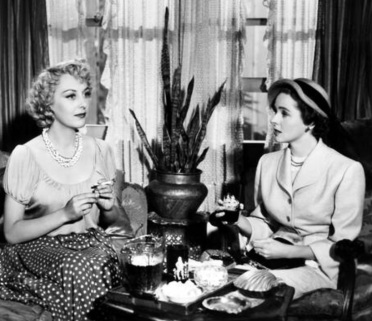
A short time later she would be hired to play Robert Young’s wife on the highly successful sitcom Father Knows Best. She earned three Emmys for her continuing role on the show. Two decades later she and Young reunited on a special episode of Marcus Welby M.D. when she played a patient of his on that series.
Despite her overwhelming success on television, she continued to snag roles in feature films…many of them “A” studio pictures. Sometimes she secured a lead role, though many were supporting roles. She never gave up the movies for TV, like many actresses her generation did.
Interestingly, a one-off guest appearance on Star Trek in 1967 would set the stage for her last motion picture…STAR TREK IV: THE VOYAGE HOME, when in 1986 she once again played the mother of Leonard Nimoy’s character, this time in a big screen blockbuster.
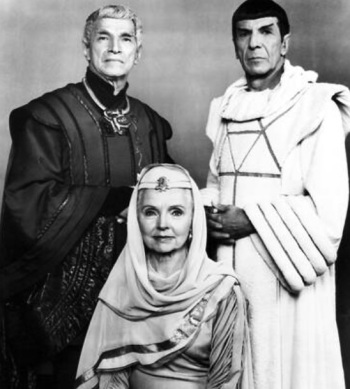
In the 1980s, she had a recurring role on St. Elsewhere as the wife of Norman Lloyd. They had been friends since their days in theater back in the 1930s. When all was said and done, Jane Wyatt could look back on a successful marriage and a successful career. Her work as an actress spanned six decades in film and five decades on television. Her remarkable achievements live on.
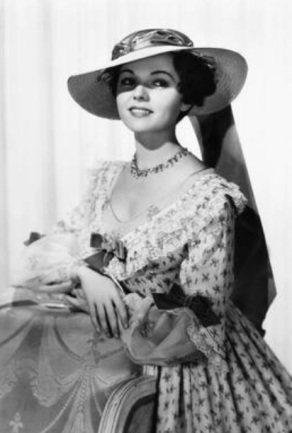
|
|
|
|
Post by NoShear on Feb 15, 2024 17:49:04 GMT
Day 14. Paul Lukas.
Despite his having earned an Oscar and a Golden Globe for his film re-creation of the Broadway role he originated in WATCH ON THE RHINE, Paul Lukas is often given short shrift today. Why? He’s such an accomplished player in all his films it’s easy to forget he’s acting.

Lukas started acting in his native Austria. By 1920, three years after beginning his silent film career, he had lead roles in Austrian films. There were also roles in German films in the early to mid-1920s. By 1928, he had found his way to Hollywood and signed a contract with Paramount. Paramount kept him plenty busy for the next few years.
Between 1928 and 1932, he made nearly 30 precodes at Paramount. The first year, 1928, they paired him with Pola Negri three times. One of these pictures was THE WOMAN FROM MOSCOW.

He was also put in films with some of Paramount’s other leading ladies, like Sylvia Sidney, Carole Lombard and Tallulah Bankhead. Oh, and Ruth Chatterton. He made four precodes with her at Paramount such as THE RIGHT TO LOVE. They would later collaborate in DODSWORTH.

Typically the studio cast Lukas as a second lead, playing suave men about town. He had his first lead role at Paramount in WOMEN LOVE ONCE with Eleanor Boardman.

After his contract with Paramount ended in 1932, he began to freelance, and it was not difficult for him to continue finding screen roles. One notable freelance assignment was his first one at MGM, DOWNSTAIRS (1932) in which he supported John Gilbert.

At RKO he supported Constance Bennett in ROCKABYE (1932).

He then made GRAND SLAM (1933) with Loretta Young at Warners.

Back at RKO, he has one of his best film roles— portraying Professor Bhaer opposite Katharine Hepburn in David Selznick’s version of LITTLE WOMEN (1933). For many, his interpretation of the character is the definitive one.

Another good assignment at RKO occurred with his third-billed part in THE FOUNTAIN with Ann Harding and Brian Aherne.

Until 1937, he continued to work steadily in Hollywood…then he went to England to do a film for Hitchcock, THE LADY VANISHES. He was cast with Michael Redgrave and Margaret Lockwood.

Lukas remained in Britain until 1939, then he returned to the U.S. He next appeared alongside Edward G. Robinson in CONFESSIONS OF A NAZI SPY for Warners.

Of course, we can't forget the fun he had in THE GHOST BREAKERS with Paulette Goddard and Bob Hope. This was a chance to return to his old stomping grounds at Paramount.

There was another Paramount flick in 1941, then he spent 1942 on Broadway doing Watch on the Rhine.
When Warner Brothers bought the rights, he went back to Hollywood and starred alongside Bette Davis in the film version. This would be his crowning achievement.

There was another Warner Brothers war film, UNCERTAIN GLORY, with Errol Flynn. Despite playing a heroic virtuous anti-fascist in Rhine, he somehow started becoming typecast as villains.

He was Hedy Lamarr’s controlling husband in EXPERIMENT PERILOUS (1944).

He was a killer in DEADLINE AT DAWN (1946)...something Susan Hayward didn't find out until the end of the movie.

A subsequent role had him acting opposite Merle Oberon in RKO's BERLIN EXPRESS (1948).

Then there was his part as a distinguished looking character in MGM's action adventure tale KIM (1950) with Dean Stockwell.

Film output slowed in the 1950s, but he continued to appear in “A” films until 1968. There was a level of competence and excellence that Paul Lukas brought to every role. TopBilled, thank you for prompting this discovery yesterday - said to be Paul Lukas' final film appearance (1970):  Paul Lukas suggests a brother of Celia Lovsky to me. I can picture Lukas responding to Edward G. Robinson's "Good God" Sol line at the exchange in SOYLENT GREEN:  |
|